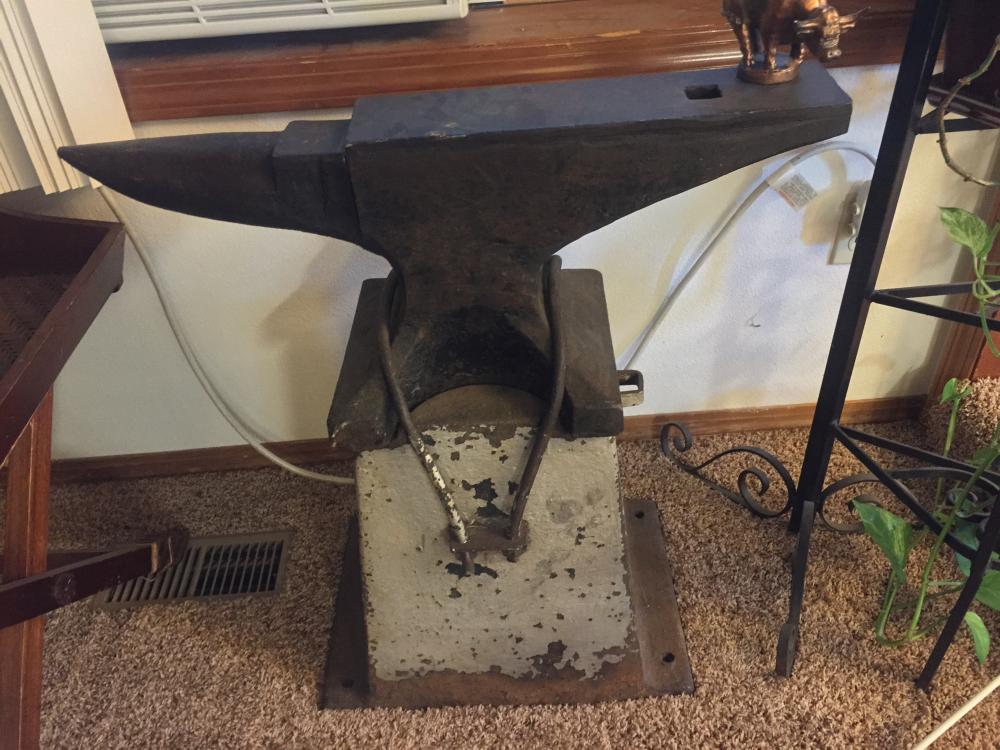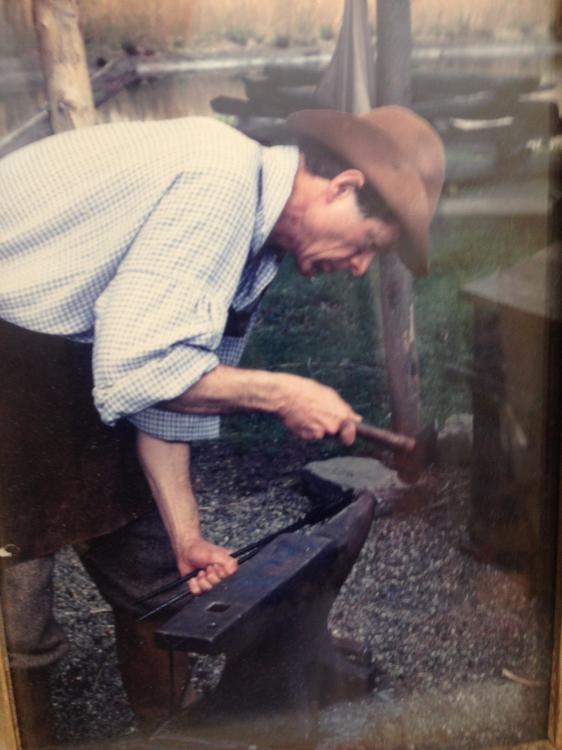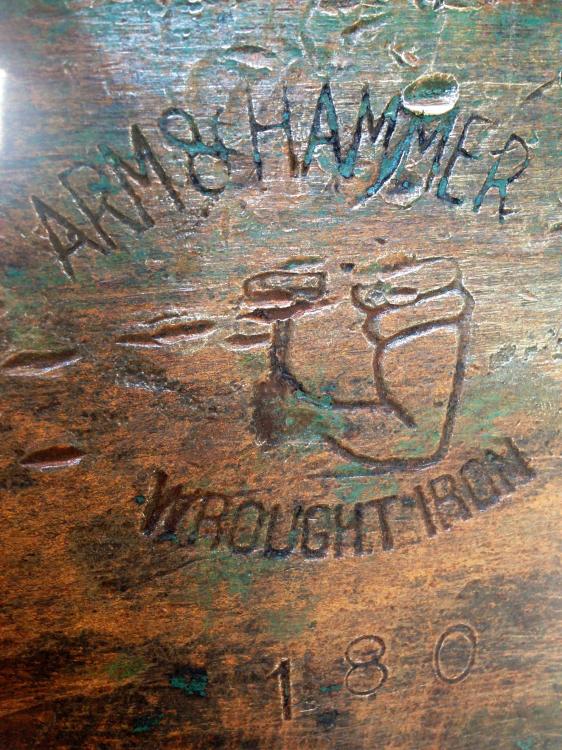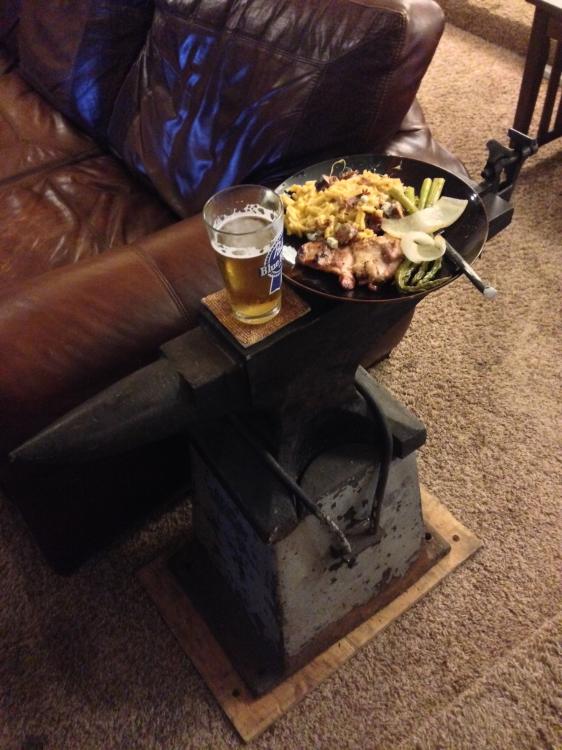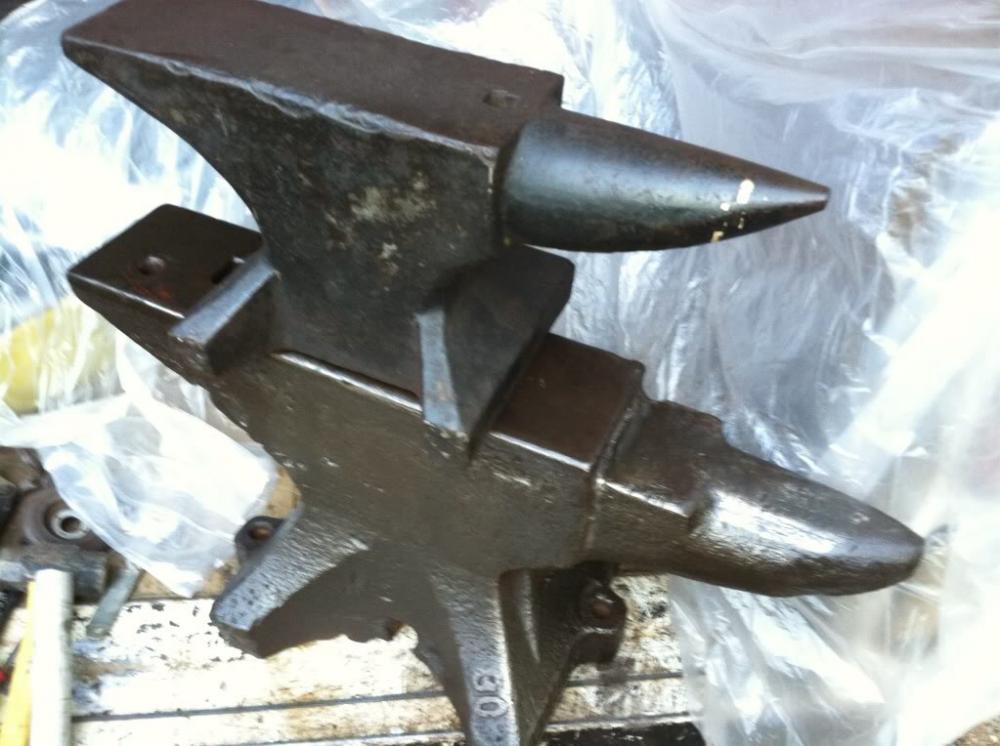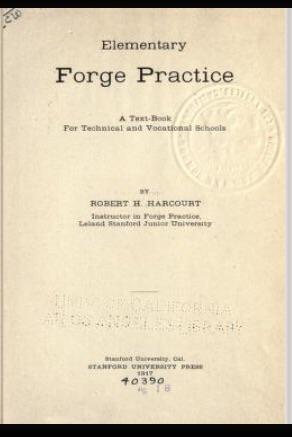-
Posts
244 -
Joined
-
Last visited
Profile Information
-
Gender
Male
-
Location
Portland Oregon
-
Interests
Knife making, forging, hunting, fishing.
Recent Profile Visitors
The recent visitors block is disabled and is not being shown to other users.
-
The weight is stamped under the Arm&Hammer The serial # will be on the front ledge of the feet. Use as is unless you have time to read up on the Gunter repair as was said. You only really need a flat spot the size of a hammer face. You could use a piece of forklift tine or similar if you need really flat.
-
You can by Batson's book and all that info is in it. Then it's easy to source the parts from Northern Tool or Parker etc. I can't imagine there is enough markup in a kit to make it worthwhile.
-
It's a 180# Arm & Hammer, 220# cast iron stand. Bought for $250 from the widow of the man shown. Originally I was just helping her sell it. Suggested $1000 for the pair and she sold it to me for $250 because she said she wanted it to go to someone who would love it like her husband did.
-
That is great. A great alternative to a stripped screw box.
-
-

Forklift Tine Anvil, Need Ideas!
fluidsteel replied to TimberTim's topic in Anvils, Swage Blocks, and Mandrels
On end -

Seeking advice on cleaning up an old anvil
fluidsteel replied to Dw Pauly's topic in Anvils, Swage Blocks, and Mandrels
I hose them off to remove loose rust and take a wire brush to it to remove loose rust then dry with paper towels. After that I spray with WD-40 and take a twisted wire cup wheel to it with my angle grinder. Rub it down with warm boiled linseed oil. -
I've long been planning a press build as I wanted a C-Frame more robust than what was available, but now that you are in the game Larry, I think I shall yield to you. If you are selling in the $4,500-5,000 range I would be handing you money.
-
When I first started forging I bought my 300# Fisher and swage block from a guy who had one of these for $100. I chose the swage over the vise and dearly regret it today. I too am green with envy. I would love one of these for forging animal heads and other tasks.
-
https://www.stanford.edu/about/history/ I don't understand the confusion or argumentativeness. It was named Leland Stanford Jr after Stanford's son. There wasn't a JR College and even the inside cover simply says Leland Stanford University and published by Stanford... Officially today it's still known as Leland Stanford Jr University...
-
It is from Stanford University. Not a Jr College... https://archive.org/details/elementaryforgepractice00harciala
-
They are great vises. The 6" I bought for holding stakes while raising copper dishes. The 4" will go on my lower bench in the shop to hold a knife vise so that I can swivel the knife vise around to do file work and hand sanding.
-

what do I have here?
fluidsteel replied to matei campan's topic in Anvils, Swage Blocks, and Mandrels
I had never heard about them sharing bases. I always associated the caplet shape to a Trenton. Good to know. Is that written up somewhere? I love my 180# Arm & Hammer. -

what do I have here?
fluidsteel replied to matei campan's topic in Anvils, Swage Blocks, and Mandrels
The caplet indent is indicative of a Trenton. -
Charles Parker / Parker / Chas. Parker: They are famous for the shape of the jaws on their machinist vises. The jaw shape allows for more complete access to the workpiece being clamped. Some history on the company and Charles Parker himself: "The Meriden Enterprise Center is a large manufacturing plant that is home to over 60 businesses, located in the center of Connecticut.The plant was the former home of companies such as the Charles Parker company, known for the manufacture of the Springfield rifle and the development of one of the early repeating rifles in the mid- nineteenth century. Charles Parker was born in 1809 and rose from poverty to become oneof Connecticut’s leading industrialists. He also became the city of Meriden's first mayor. He started his manufacturing career inventing and producing coffee mills in a small shop in 1832.By 1860, he owned several large factories and employed hundreds of people, in and around Meriden. Parker products included hardware and house wares, flatware, clocks, lamps, piano stools and benches, vises, coffee mills, industrial machinery, and, after 1862, guns. Guns, however, neveramounted to more than 10 percent of Parker’s business. Charles Parker died in 1901 and his descendants carried on his businesses until 1957. The Great Depression of the 1930s took its toll on the Parker enterprise and it never fully recovered. Parker products have now become “collector’s items,” especially the Parker shotguns. The Charles Parker Company sold its gun facility and the rights to the Parker gunto Remington Arms Company in 1934, and Remington continued the Parker shotgun line until World War II.The attraction by collectors to the Parker shotgun comes because of the gun’s inherent quality and beauty.The Parker gun is an American classic". Copied from the Garagejournal.com

